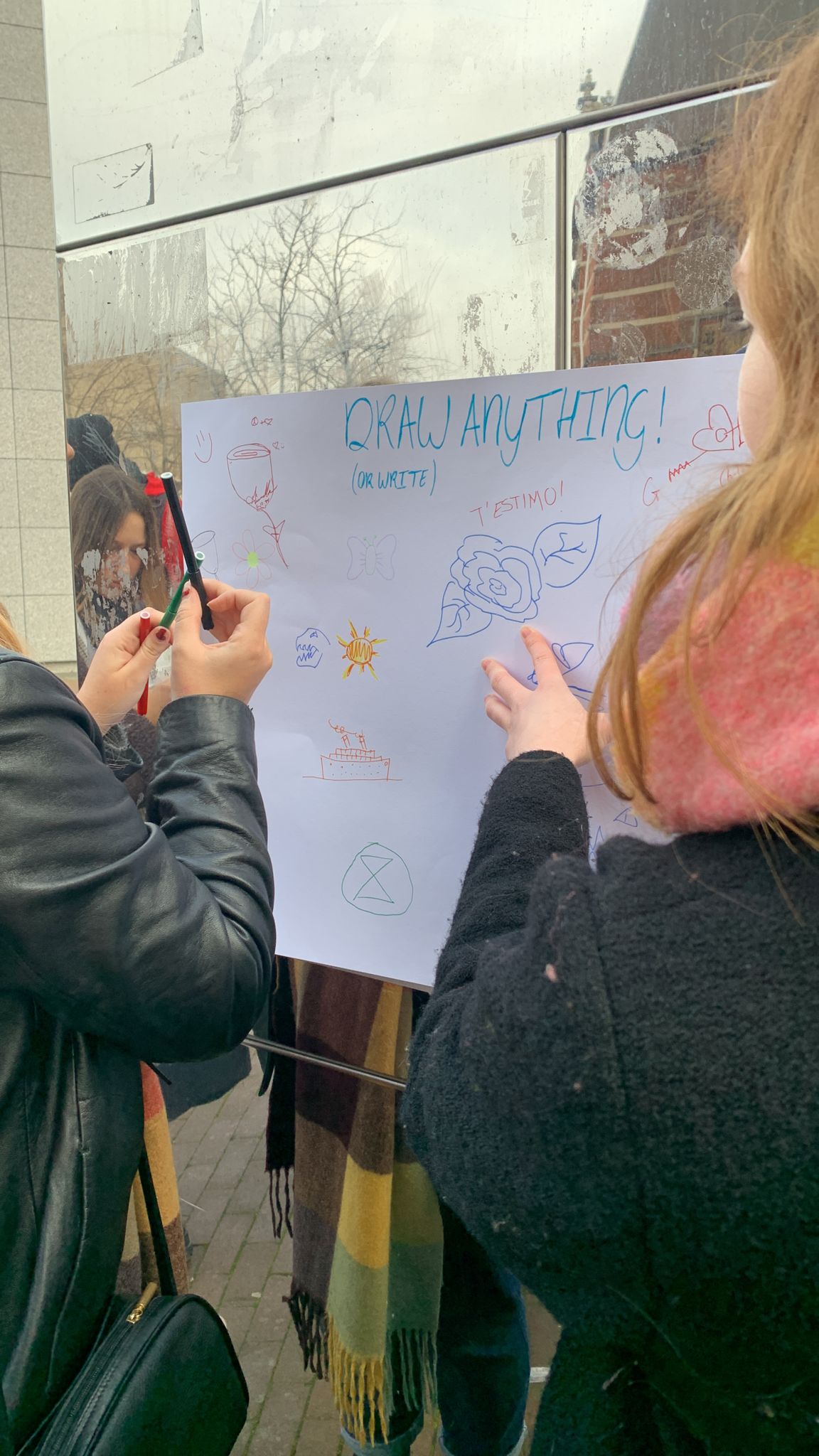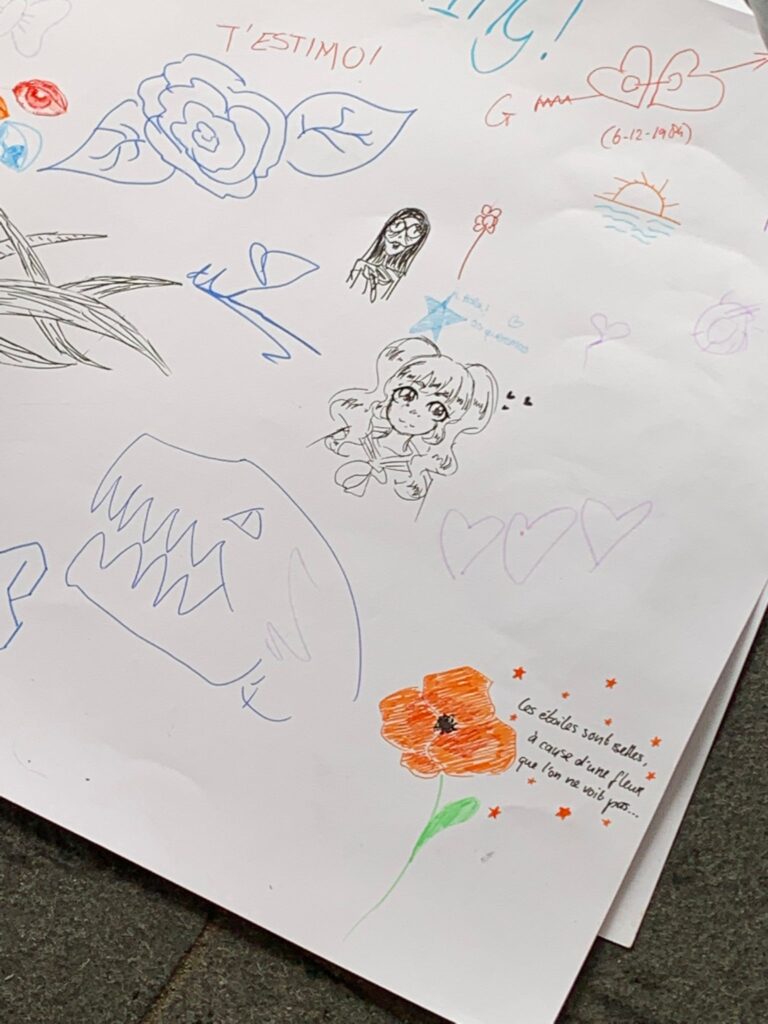
Our main objective was establishing a space where the audience partook in the creation of the art piece that they observed.

In addition to challenging the conventionalized ‘ways’ of experiencing art (as in taking the role of a passive observer), the piece also undermined the institutional authority of museums that not just determined what constituted ‘art’, but profited from it.
In the project “Street Art But Make It Legal” our main objective was establishing a space where the audience partook in the creation of the art piece that they observed. For the setup of the project we decided on providing people with a blank poster paper with the phrase “Draw or write anything”. For this we bought an A2 paper and a selection of colorful pens. Afterwards we presented the poster in the public space around the entrance of the Van Gogh Museum and offered the pens to people who wanted to interact with it. This quality of ‘changeability’ gave the art piece its defining property; during the project it was never necessarily ‘finished’, but rather embodied a constant state of ‘collective procreation’ by the audiences. Thus, the art piece embraced a postmodern form through its “dissemination”, “depthlessness”, “pastiche”, and “decentration” (Bennet, 405-412). In addition to challenging the conventionalized ‘ways’ of experiencing art (as in taking the role of a passive observer), the piece also undermined the institutional authority of museums that not just determined what constituted ‘art’, but also profited from it. Furthermore, we observed how some people made pastishes of previously drawn figures and the points of intersections between two participants’ drawings formed interconnected images.